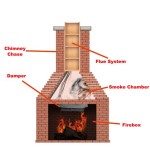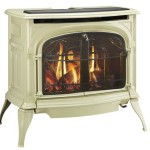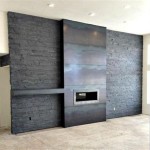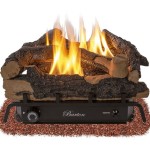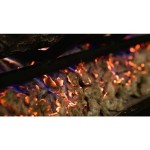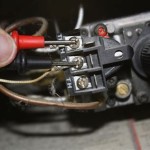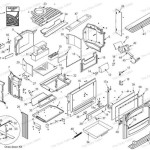Replacing a Fireplace Gas Valve: A Comprehensive Guide
The gas valve in a fireplace serves as a crucial safety and operational component. It controls the flow of natural gas or propane to the burner, enabling ignition and sustaining the flame. Over time, gas valves can fail due to wear and tear, corrosion, or internal component degradation. A malfunctioning gas valve can present a safety hazard, potentially leading to gas leaks or uncontrolled flames. Therefore, understanding when and how to replace a fireplace gas valve is essential for maintaining a safe and functional fireplace.
This article provides a detailed guide to replacing a fireplace gas valve, covering important considerations, safety precautions, necessary tools, and step-by-step instructions. It is imperative to emphasize that working with gas appliances requires a high level of competence and adherence to safety protocols. If there is any doubt about one's abilities, it is strongly recommended to consult a qualified and licensed gas technician.
Identifying a Faulty Gas Valve
Several symptoms can indicate a failing gas valve. Some common indicators include:
- Pilot Light Issues: The pilot light may be difficult to light or may not stay lit after being lit. This can be caused by a malfunctioning thermocouple, but a faulty gas valve that isn't providing sufficient gas flow to the pilot can also be the culprit.
- Flame Instability: The main burner flame may be erratic, flickering, or smaller than usual. This could suggest inconsistent gas flow being regulated by the valve.
- Failure to Ignite: The burner may fail to ignite at all, even when the pilot light is lit. This could point to a completely blocked or non-functional gas valve not allowing gas to flow to the main burner assembly.
- Gas Leak Smell: A persistent smell of gas, even after the fireplace has been turned off, indicates a potential gas leak. While this could originate from various points in the gas line, the gas valve is a prime suspect. If a gas leak is suspected, immediately shut off the gas supply to the fireplace and contact a professional.
- Clicking Sound: Some electronic ignition systems use a solenoid valve. If the gas valve is only producing a clicking sound when attempting to ignite the fireplace, it could indicate a failed solenoid or an internal mechanical issue within the valve.
It is crucial to accurately diagnose the problem before proceeding with a gas valve replacement. Consider checking other components like the thermocouple or thermopile, gas lines, and the igniter before concluding that the gas valve is defective.
Safety Precautions and Preparations
Prior to commencing any work on the fireplace gas valve, it is paramount to prioritize safety. The following precautions must be strictly adhered to:
- Shut Off the Gas Supply: Locate the main gas shut-off valve for the fireplace. Typically, this valve is situated near the fireplace or the gas meter. Turn the valve to the "off" position (usually perpendicular to the gas pipe) to completely cut off the gas supply to the fireplace. Double-check by attempting to light the pilot light; it should not ignite.
- Disconnect Electrical Power: If the fireplace has electrical components (e.g., an electronic ignition system or blower), disconnect the power supply by unplugging the fireplace or switching off the corresponding circuit breaker.
- Ventilation: Ensure adequate ventilation in the work area. Open windows and doors to allow any lingering gas to dissipate.
- Avoid Open Flames: Do not use open flames (e.g., matches, lighters) near the fireplace while working on the gas valve.
- Use Appropriate Tools: Use only tools designed for working with gas lines (e.g., pipe wrenches, adjustable wrenches). Avoid using pliers or other tools that may damage the gas fittings.
- Gas Leak Detector: Have a gas leak detector (either electronic or a soap-and-water solution) readily available to test for leaks after the new gas valve is installed.
- Wear Safety Glasses: Protect your eyes from debris by wearing safety glasses.
Gather all the necessary tools and materials before starting the replacement process. This will help to streamline the process and minimize the risk of delays or errors.
Required Tools and Materials
The following tools and materials are typically required for replacing a fireplace gas valve:
- New Gas Valve: Ensure the replacement gas valve is compatible with the fireplace model and gas type (natural gas or propane). Match the BTU rating and input/output connections of the old valve.
- Pipe Wrenches (Two): Use two pipe wrenches - one to hold the pipe and one to loosen or tighten the fittings.
- Adjustable Wrenches: Adjustable wrenches can be used for smaller fittings.
- Pipe Joint Compound (Gas-Rated): Use a pipe joint compound specifically designed for gas lines. This compound helps to create a gas-tight seal.
- Gas Leak Detector: Use a gas leak detector or a spray bottle filled with soap and water to check for leaks after installation.
- Screwdrivers (Various Sizes): Screwdrivers may be needed to remove panels or access the gas valve.
- Pliers: Pliers may be helpful for removing small clips or holding components in place.
- Gloves: Wear work gloves to protect your hands.
- Safety Glasses: Protect your eyes from debris.
- Flashlight: A flashlight will help illuminate the work area.
- Shop Rags: Use shop rags to clean up any spills or drips.
Having all these items readily available will simplify the replacement process.
Step-by-Step Replacement Procedure
The following steps outline the general procedure for replacing a fireplace gas valve. Always refer to the manufacturer's instructions for the specific fireplace model for detailed guidance.
- Access the Gas Valve: Remove any access panels or fireplace components that are obstructing access to the gas valve. This may involve removing screws, clips, or other fasteners.
- Disconnect Gas Lines: Using two pipe wrenches (one to hold the existing pipe and one to loosen the fitting), carefully disconnect the gas lines connected to the gas valve. Note the orientation of the gas lines and fittings for reassembly. Be prepared for a small amount of residual gas to escape when disconnecting the lines. Have shop rags readily available to wipe up any drips.
- Disconnect Electrical Connections (If Applicable): If the gas valve has electrical connections (e.g., for an electronic ignition system), carefully disconnect them. Note the positions and connections of the wires for proper reassembly.
- Remove the Old Gas Valve: Once all gas lines and electrical connections are disconnected, remove the old gas valve from its mounting location. This may involve removing screws or nuts.
- Prepare the New Gas Valve: Apply a thin, even coat of gas-rated pipe joint compound to the threads of the fittings on the new gas valve. Avoid getting the compound inside the valve.
- Install the New Gas Valve: Carefully install the new gas valve in the same orientation as the old valve. Secure it in place with the appropriate screws or nuts.
- Reconnect Gas Lines: Reconnect the gas lines to the new gas valve, ensuring that the fittings are tightened securely but not overtightened. Use two pipe wrenches to prevent twisting or damaging the gas lines.
- Reconnect Electrical Connections (If Applicable): Reconnect any electrical connections to the new gas valve, ensuring that the wires are connected to the correct terminals.
- Test for Gas Leaks: Turn the gas supply back on at the main shut-off valve. Apply a gas leak detector or a soap-and-water solution to all gas line connections and around the gas valve. Look for bubbles, which indicate a gas leak. If a leak is detected, immediately turn off the gas supply and tighten the connections further. Retest until no leaks are found.
- Restore Power and Test Operation: If applicable, restore electrical power to the fireplace by plugging it back in or switching on the circuit breaker. Attempt to light the pilot light and the main burner. Ensure that the flame is stable and that the fireplace is operating correctly.
- Reassemble Fireplace Components: Replace any access panels or fireplace components that were removed during the replacement process.
Following these steps carefully will help ensure a successful gas valve replacement.
Post-Installation Checks and Maintenance
After replacing the gas valve, it is crucial to perform thorough post-installation checks and establish a maintenance schedule to ensure continued safe and efficient operation. The following steps are recommended:
- Detailed Leak Test: Even if an initial leak test was performed during installation, conduct a more thorough check of all gas line connections using a gas leak detector or soap-and-water solution. Pay close attention to areas around the gas valve and any fittings that were disturbed during the replacement process.
- Flame Observation: Observe the flame pattern of the main burner. The flame should be consistent, stable, and properly sized according to the fireplace manufacturer's specifications. Any unusual flame characteristics, such as flickering, yellowing, or excessive soot, may indicate a problem that requires further investigation.
- Pilot Light Verification: Verify that the pilot light remains lit and stable after the main burner is turned off. A properly functioning pilot light is essential for reliable ignition of the main burner.
- Proper Ventilation: Ensure that the fireplace venting system is clear and unobstructed. Proper ventilation is crucial for safely removing combustion gases from the fireplace.
- Regular Cleaning: Periodically clean the fireplace glass and burner assembly to remove dust, debris, and soot. This will help to maintain optimal performance and prevent potential safety hazards.
- Professional Inspection: Schedule a professional inspection of the fireplace and gas valve at least once a year. A qualified gas technician can identify potential problems early and perform necessary maintenance to ensure safe and reliable operation.
By performing these checks, the fireplace gas valve will be safe to use after being replaced.

Replacing A Gas Ball Valve To Your Fireplace

How To Install A Decorative Key Valve And Trim Ring

Obadiah S Gas Fireplace Troubleshooting Replacing The Valve

Gas Valve Check Does My Quarter Turn Ball Need Replaced
Hvac Talk Heating Air Refrigeration Discussion

How To Remove And Replace A Gas Fireplace Valve

How To Replace The Gas Valve On A Napoleon Fireplace

Gas Fireplace Valve Internachi Forum

How To Test Your Main Control Valve Www Mygasfireplacerepair Com

Low Pressure Gas Fireplace Failure Safety Control Valve Kit Heater Thermocouple Replacement 5 8 18unf Com


